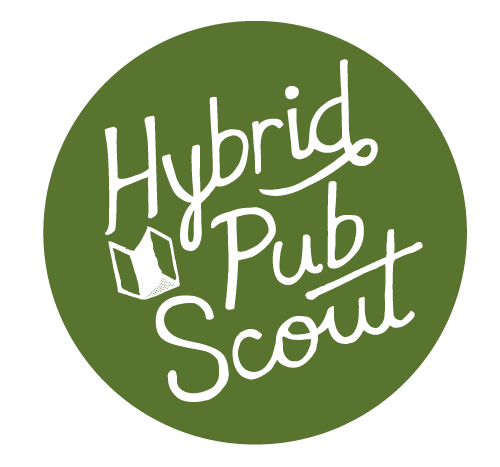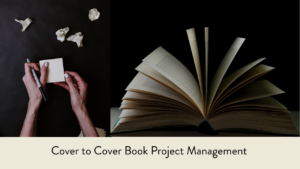A detailed description of my process for transforming an author’s knowledge and ideas into a fully formed book
A lot more goes into publishing a book than writing it. Usually, we call the finished product of an author’s labor a manuscript, because the production tasks that make it an actual book haven’t yet taken place. However, we can save our opinions about what is and isn’t a book for another day. (Some nerdy folks like to fight about it, and I’m no exception.)
To learn about my philosophical approach to ghostwriting in more depth, go check out this blog I wrote on the subject. The blog you’re reading right now focuses on how I help an author write a book, then facilitate its production to ensure a strong final product.
To begin, here’s a list of the steps that go into bringing a book from conception to completion.
- Writing (naturally!)
- Copyediting
- Proofreading
- Cover design
- Interior design
- Ebook production
- Uploading final files to sales platforms
My style is to walk with the author from the beginning to the end of these steps, frequently checking in for feedback and approval and drawing from a pool of trusted contractors. I’ll now break down all the points above to give you a better idea of what they mean.
Please note—other ghostwriters and project managers will likely have distinct opinions from me depending on what works best for them.
Creating the Plan
Sometimes someone comes to me with nothing but an idea, and other times they come with notes or even a half-finished manuscript. I’ve learned that each of these states contain their own obstacles and challenges and frequently require just as much effort to parse. The first step of either path is to take an inventory of what the book should cover and then to organize the information into a cogent outline.
Ideally, after 4–6 weeks of sifting through existing info and interviewing the client, I’ll have what I need to build a table of contents that includes theses and summaries for each chapter and lists of topics and arguments included with each.
This outline can have plenty of minor adjustments as the author’s thoughts develop or change. In fact, I’d say it’s inevitable! However, the more complete the outline and the more confidence the author has in it from the beginning, the faster the writing and revision process will be.
Writing and Revising the Manuscript
I like to be transparent about my writing process, and that includes collaborating through Google docs. Clients are invited to check in after chapters are completed to judge that the voice and direction are appropriate (though I prefer larger revisions to occur after the entire first draft is complete). Authors can review the work and use the “suggest” function to leave comments in the document.
Putting the manuscript together is more than creating the central text. It also includes gathering author bios and acknowledgments, as well as photos, diagrams, or other interior graphics. Before the book goes to copyediting, I also like to complete the summary that will go on the back of the book. That comes in handy if authors plan to market their book in advance of its release.
Copyediting and Proofreading
Next, I draw from my network of experienced editors and hand the manuscript to them to correct grammatical errors and catch inconsistencies. The copyediting round consists of a line-by-line edit for grammar, ease of reading, logical issues, balance, and voice. The edits are then returned to me for review, during which time I’ll get in touch with the author if there are any questions or concerns that require feedback. Afterwards, the manuscript will be returned to the copy editor with corrections and any additional text for a final proofread (at this point they are just looking for small punctuation, spelling, and grammar issues).
Cover Design
During the writing process, work on the front cover also begins. Ideally, a final title and subtitle are selected during the writing process in a timely way to help make this happen. The cover design process may or may not be completed before delivery of the manuscript to copyediting. That heavily depends on the approval of the title as well as the completion of cover and spine copy.
First, I present the author with multiple covers of books currently on the market for consideration and also give them prompt questions to determine their aesthetic preferences. Once I have the author’s input, I pass the info on to a professional book designer. They then create mockup cover designs for author feedback. Once a mockup concept is approved, the designer uses photos, type, and graphic elements to create and hone the cover to the author’s satisfaction.
Interior Design and E-book Production
After the manuscript is proofread, and after I have given it a final review, it’s time to get these hard-won words looking as professional as they actually are. In the same way they provide cover mockups, the designer also provides type treatments that allow the author to select how the inside of their book will look.
Once the book is designed for print, it gets one more review for overlooked flaws. This is also the point at which the table of contents is generated, since up until now, the page numbers change along with edits and revisions. At this point the ebook is also produced based on those print files.
Getting the Book Online
After the print and ebook files are complete and delivered, it’s time to upload the book to major ebook distributors and a print on demand service. This process includes adding descriptions, keywords, and metadata to listings, based on the back cover copy of the book. I also create an Amazon author page as part of this process if none exists, using the provided author bio and headshot.
There you have it! What used to be just a series of thoughts and ideas has made it across the finish line and is now a real book. There are plenty of other sales and marketing tasks that come after this production process, as well as options to create alternate book formats (yes, audiobooks are books—I will not be swayed from this opinion). That is where the author takes the baton for the next leg of their journey!
If you’d like to speak about writing and publishing your own book with Hybrid Pub Scout, please visit this page to learn more and get in touch!
Photo credits:
Kelly Sikkema on Unsplash
Mikołaj on Unsplash



